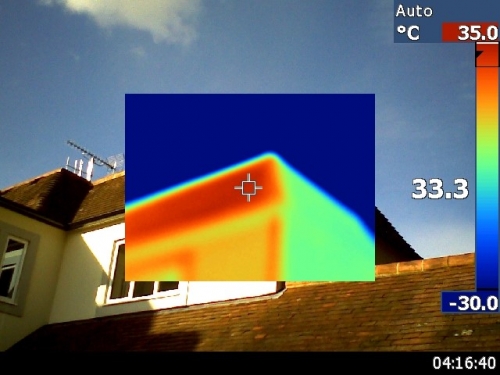‘The building never gets warm’ or ‘we have to wear jumpers’ are regular phrases used by the occupants of such properties, even when they are heated by high temperature fossil fuelled boilers. Therefore when suggesting utilising ground source heat pumps to heat such buildings, it is often quickly dismissed as not being ‘up to the task’. However, the problem is not always the building!!
There are two main factors that can help us to heat these buildings. Firstly, we must stop or reduce any draughts, as these are a major contributor to cold properties. Secondly, we must change how we operate our heating systems.
Traditionally, the heating comes on in a building early morning, say six o’clock and starts putting heat into the building. It may remain on for 2-3 hours whilst we get up, have breakfast and leave for work.
As the heating has been off overnight for 6-7 hours, all the heat in the fabric of the building has disappeared out of the walls and is ‘stone’ cold. Therefore any heating in the morning is absorbed, like a sponge, by the building fabric and very little benefit is given to the occupants, unless they are in close proximity to a radiator. Then we leave for work.
The heating may come back on at three o’clock ready for our return. But again as the heating has been off for the last 6-7 hours the fabric is cold once again, as the heat has disappeared through the walls into the atmosphere. The heating starts pumping into the system and, depending on the building, the occupants may not feel any real benefit for 4-5 hours. We go to bed and the whole process starts again. Therefore in a 24 hour period, with 10 hours of heating, we heat the fabric for 7 to 8 hours and we feel the benefit for a couple of hours at the end of a day.
Now whilst older buildings may not be thermally efficient, they can be thermally effective due to their mass. These buildings work very well in summer keeping the building cool and if the heating system is operated correctly, they can keep the occupants warm in winter. We need to maintain the temperature in the fabric of the building and this then acts as a form of heating, not too dissimilar to underfloor heating.
If we run our heating as normal in occupation periods but instead of switching the system off we put it into setback for the rest of the time. This means in normal off periods, we set a lower room temperature to be maintained. For example if we normally aim for a room temperature of 21°C, we could setback to 16°C. This means, for occupation times we are only lifting the temperature by 5°C instead of 10-12°C, thus providing much quicker heat up times and the occupants feel the benefit much quicker.
Additionally, thermostats are only set high in properties due to the ‘feeling cold’ effect and trying to get heat quickly. If we maintain the fabric temperature, it will give the benefit of being able to turn the thermostat down by 1-2°C as we feel warmer. This in itself can give a >10% reduction in fuel costs.
Whilst people may argue maintaining the fabric all day whilst you are out is costly, actually there are a number of counter arguments. Occupants could be wasting up to 80% of the heat they currently pay for, you will be able to reduce the thermostat temperature thus reducing fuel requirement, old buildings need heat to prevent deterioration and most importantly the occupants are cold!
This concept can work with any technology but renewable technologies like ground source heat pumps that can deliver consistent, effective, efficient energy at lower temperatures is ideal and if linked to good weather compensated control can actually reduce energy bills.
With reduction of draughts, increased insulation in roof spaces, installation of a ground source heat pump system and the current government incentives, investment in a renewable system makes sound economic sense and finally the occupants of older buildings can step out from the cold.







